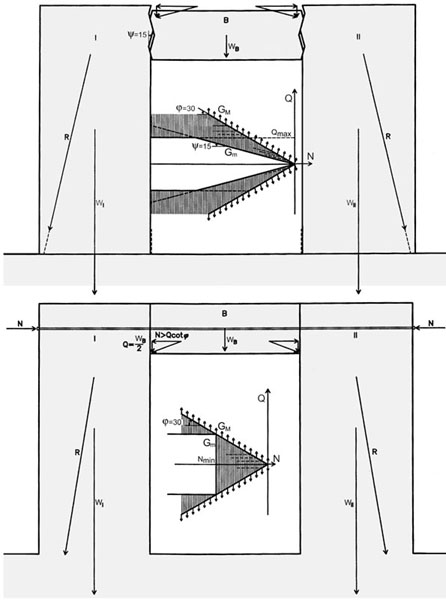
Pierre Smars, April 2000
Ph.D. dissertation presented at the Catholic University of Louvain (K.U.Leuven)
Original title: "Etudes sur la stabilité des arcs et voûtes, confrontation des méthodes de l'analyse limite aux voûtes gothiques en Brabant"

Historical structures are complex. Their precise geometry is not known; surveys, very often inaccurate, seldom show deformations and sometimes do not even exist. Materials of the past are often forsaken or used in new ways. They are studied much less than steel, concrete and other materials used in contemporary architecture. Structures are also less known and more variable; frequently they present hidden features. The building history - the sequence of extensions, alterations and restorations - influences its behaviour.
Like any study object, historical structures are analysed through manageable reconstructions, models, which are the foundation of our knowledge. To allow building conservation professionals to make decisions on as objective and legitimate grounds as possible, an understanding of the implications of the numerous associated hypotheses is essential.
Models for studying stability belong to two major families:
The first groups models using the deformability characteristics of the materials. Theoretically more trustworthy, they nevertheless presuppose a precise knowledge of parameters not fully known in practice. The consequences of necessarily introduced simplifying hypotheses are numerous, difficult to foresee and rarely studied.
The second family groups models only using equilibrium equations and materials' characteristics of resistance, looking for limit situations. Their use for the analysis of historical buildings generally presupposes absence of sliding and no resistance to traction, allowing an application of the "standard" plasticity theorems. Nevertheless, in some circumstances, sliding affects structures, vaults in particular. The plasticity theorems, consequently inapplicable, can lead to overestimates of stability. Sliding forms possible new mechanisms and have two negative effects: (i) structures more resistant locally can be weaker globally and (ii) repetitive phenomena can progressively lead to collapse by accumulation of small effects.
This work aims to clarify the decision-taking process concerning stability assessment of existing vaults, to present arguments in favour of the methods of limit analysis and to integrate possibility of sliding, resistance to traction and finite displacements.

Premio Edoardo Benvenuto 2002 awarded by the «Associazione Edoardo Benvenuto per la ricerca sulla Scienza e l'Arte del Costruire nel loro sviluppo storico»